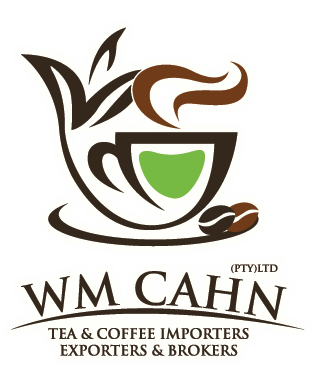The story of tea begins in China. According to legend, in 2737 BC, the Chinese emperor Shen Nung was sitting beneath a tree while his servant boiled drinking water, when some leaves from the tree blew into the water. Shen Nung, a renowned herbalist, decided to try the infusion that his servant had accidentally created. The tree was a Camellia Sinensis, and the resulting drink was what we now call tea.
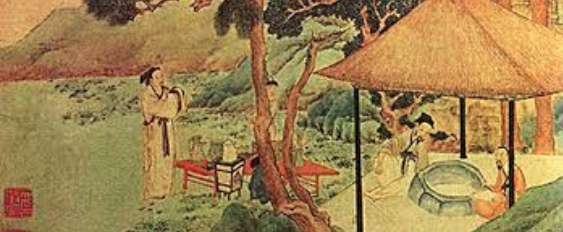
What's Tea?
Tea as a brew is a luminous coloured liquid which possesses a pleasing aroma and is a delicious and fragrant beverage taken hot or cold. This beverage which has managed to retain, and indeed, increase its popularity over millennia.
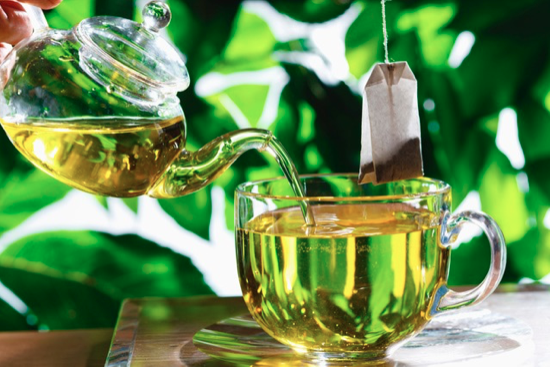
The Tea Plant
The tea plant (Camellia Sinensis) is a species of tree related to the Camellia. Its flowers are yellow-white which bear small, hard-shelled fruits, similar to a hazelnut. The evergreen leaves are leathery, dark and slightly serrated. A tea plant can easily grow to become 100 years old. In fact, wild tea plants are reputed to reach an age of up to 1,700 years.
Active ingredients in Tea
The cheapest and most consumed beverage worldwide after water is also one of the most valuable in
terms of its chemical composition – approximately 32% of its ingredients pass into the infusion.
These ingredients include Polyphenols as the primary antioxidants present in tea, important amino acids like theanine, as well as fluorides.
Tea contains
Caffeine/Tannins/Amino acids/Proteins
Trace elements and minerals: fluoride, potassium, calcium, manganese/Vitamins: niacin, vitamin B1 and B2
“Tea both stimulates and calms”: Tea owes its stimulatory effect to its caffeine content: It does not act on the circulation via the heart, however, but directly on the brain and central nervous system, as it is bonded to the tannins and is not released until it reaches the intestine. This explains the demonstrable capacity of tea to increase concentration and responsiveness.
Tea growing regions
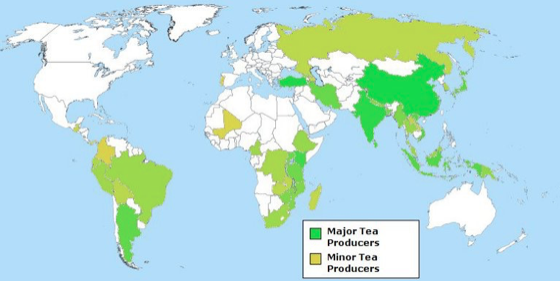
The tea growing regions of the world are India, Sri Lanka (Ceylon), China, Japan, Taiwan, Vietnam, Indonesia (Java, Sumatra) Kenya, Malawi, South Africa, Rwanda, Zimbabwe, Mozambique,Bangladesh, Russia, Iran, Turkey, Uganda, Tanzania, Argentina etc.
While the prepared land is under rehabilitation, a nursery of tea plants is nurtured one year prior to planting. The tea plant growth phase requires it to be trained for the next two to three years through regular fertilisation and selective trimming to develop its frame into becoming a mature tea bush. Tea plants could be selected from various clones to suit the requirements of the locality and also that of the grower such as yield, agro climatic conditions, type of land, quality of the tea product itself etc. Generally, the new clonal(superior cultivar) tea could yield 4,000 to 5,000kg per hectare in the Asian regions and in the virgin soils of Africa and Indonesia, production can even be as high as 10,000 to 12,000kg per hectare.
HARVESTING
When the bush develops and a complete ground cover is established (which would take two to three years depending on the climatic conditions and elevation), the tea bushes could be harvested on a regular basis which is approximately once in eight to ten days. Tea pickers gather the two uppermost leaves and the bud (best quality). Most picking is still done by hand in order to preserve the quality of the harvest. Some countries have developed mechanical picking methods, which greatly simplify production processes.
The following potential of the tea plant would be achieved only after it receives its second prune and should continue for around 30 to 40 years. Pruning is carried out on a regular basis, once in every three to five years depending on the growing conditions which are related to elevation and climatic conditions.
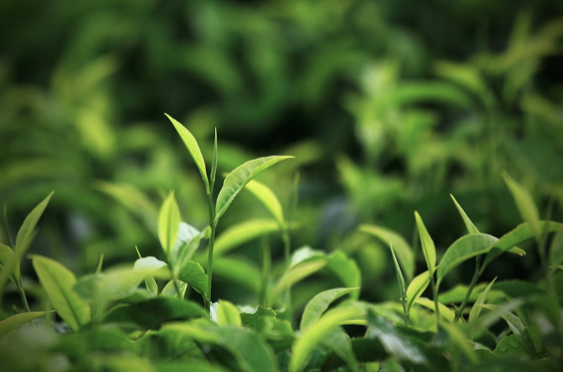
This production method consists of five stages – withering, rolling, fermentation, drying and sorting.
Withering
The freshly picked green leaves are spread out to dry on ventilated trays. During this process, approximately 63% moisture is extracted from the leaves, making them soft and pliable for further processing.
Rolling
The leaves are then rolled by applying mechanical pressure to break up the cells and extract the cell sap. After 30 minutes, the leaves, still damp from the sap, are sieved to separate the finer leaves. These are spread out immediately for fermentation, while the remaining coarse leaves are rolled for a further 30 minutes under higher pressure. If necessary, this process is repeated several times. A short rolling time produces larger leaf grades, while longer rolling breaks the leaves up more resulting in smaller grades. During the rolling process, the cell sap runs out and reacts with oxygen, thus triggering the fermentation process. At the same time, the essential oils responsible for the aroma are released.
Fermentation
After rolling, the tea is spread out in layers approximately 10cm high for one to three hours in a cool, damp atmosphere to finish off the fermentation process. During this process, the substances contained in the cell sap oxidise. In this production phase, the green leaf gradually turns a copper colour. The colour and typical odour tell the person supervising the process how far the fermentation has progressed. Various chemical reactions cause the leaf to heat up during fermentation. It is critical for the quality of the tea that the fermentation process be interrupted at its peak, when the temperature is at its highest.
Drying
Next, the tea is dried with hot air at a temperature of approx. 850°C to 880°C in order to interrupt the oxidation process. The residual moisture is thereby extracted from the leaves, the extracted sap dries on the leaf and the copper-coloured leaf turns dark brown to black.
Sorting
Finally, the dried tea is sieved to separate the different leaf grades. The orthodox production method provides teas of all leaf grades: leaf, broken, fannings and dust. Leaf grades only refer to the leaf size; however, they are not necessarily an indication of the quality of the tea.
Withering
The leaf is withered for a minimum of 12 hours with a percentage ranging 42% to 47% depending on the climate condition and the type of teas.
Rolling/Rotorvane/Dhool/Fermentation/Extraction
The leaf is rolled initially for a period of 30 minutes by applying pressure. Thereafter the rolled leaf is charged through a 12” Rotorvane and then double passed through an 8” Rotorvane. The first dhool is extracted (finer particles) through the rolled breaker fitted with No. 7 and 8 measures. The extracted dhool is immediately spread on fermentation beds. The balance bulk tea is once again passed through a conveyor and is fed to another set of 8” Rotorvane for further maceration. The second dhool is extracted on the same type of roll breaker with the same mesh numbers. The second dhool is again sent for fermentation and kept separately. The same procedure of Rotorvane cut and roll breaking, and the extracting of finer dhool, is continued till such time the final bulk is reduced to 2% to 3%. The fermentation period varies from 45 minutes to 3 hours depending on the climate condition and the type of teas. The fermenting area is separately identified with humidifiers surrounding the area to control hygrometric differences.
Drying
Next, the tea is passed through a dryer where hot air is circulated at a temperature between 1300°C to 1300°F. Finally the black tea is obtained from the dryer with an approximate run through period of 18 to 21 minutes.
Sorting
10 to 15 minutes after firing the tea is passed through a stalk extractor and thereafter through a fibre extractor to extract whatever possible stalk and fibre from the black tea whilst the warmth is maintained in the fired dhools. This operation is undertaken in the drier room itself to maintain the warmth in the machines and therefore extract as much stalk and fibre as possible. The fired tea is then passed through a Middleton sorter to differentiate larger particles and smaller particles.
This sifter has 5 numbers of different measures to extract graded teas (Primary grades, such as BP1,PF1,PD and Secondary grades such as PD1,F2, Dust-1). The graded teas are subsequently transferred in to bins which are located in the sifting room. These bins are air-tight and lined with aluminium sheets to maintain the freshness of the graded tea. Tea factories are equipped with bulkers to bulk the graded teas prior to packing.
CTC stands for crushing, tearing and curling. Both the CTC and LTP methods are mainly used for the finer end of the scale. These teas are usually destined for teabag production. The withered leaf is often cut to a uniform size by machine. Then the leaves are fed into the CTC machine where they are crushed, torn and curled in a single operation by metal rollers.The crushed leaves are then fermented, dried and sorted.
The third method of producing black tea is the LTP method, named after the inventor of the relevant machine, the Lawrie Tea Processor. In this method, the withered leaves are often levelled before being processed in the LTP machine. Here they are virtually torn to pieces by blades rotating at high speed. This is followed by the usual fermentation, drying and sorting procedures.
The Production of Green Tea
Green tea comes from the same plant as black tea, but the fermentation process is prevented by heat treatment immediately after withering.
Withering
This process is only carried out where necessary. The necessity and duration of withering varies widely according to the desired type of tea.
Steaming/dry heat treatment
This destroys the plant’s own enzymes so that the leaf will retain its green colour instead of turning “black”.
Rolling
Rolling is performed manually or by machine depending on the type of tea. In some cases the leaf is rolled into artistic shapes following a tradition which dates back thousands of years.
Drying
For this purpose, the leaves are either stacked in hot-air rack driers, driers or exposed to the natural heat of the sun.
Sorting
Green tea is available in the same familiar grades – leaf, broken, fannings or dust – as black tea, depending on the production specification. Green tea is a strongly alkaline drink which protects the body from hyperacidity. It contains numerous tannins, minerals and vitamins.
Tea tasting, much like wine tasting, uses similar steps – visual, smell, taste and touch. You can tell a lot about a tea by examining the dry leaves. Gently press some dry leaves in your hand – most new teas are a little springier and less likely to crumble than older teas. Look for fibres, dust or stalks and note the leaf size.
Measure a level teaspoon of each sample into the cup. Use white or clear cups to view the truest colour. Begin your analysis of the infused leaves as the cups are filled. Smaller flat leaves will show more body than larger twisted leaves, which take longer to steep. Steep the teas for a fixed time – generally three to five minutes. After steeping take in the aroma of the tea and examine the infused leaves for colour and evenness. Colour does not necessarily indicate the strength or body of the liquor.
Now you are ready to taste – take a spoonful of the liquid and slurp with force to ensure that the tea is sprayed over the entire tongue. This step is important since we taste bitterness at the back of the tongue, saltiness in the middle, sweetness in the front and sourness on the sides of the tongue. It may be difficult to describe your findings at first, but after sampling many teas you will begin to notice similarities and differences in colour, taste and smell. You may want to start a notebook to record your impressions.
There are many terms used in tea tasting. To assist you with your tea tasting you may find it helpful to view the glossary of terms.
Assam: The world's largest contiguous tea growing region, situated on either side of the Brahmaputra in Northern India.
Autumnal: The Darjeeling Autumnal begins after the second flush period (October/November) and has a more full-bodied taste than the second flush. The yields are not as high as during the peak times, however.
Bancha: Bancha is the traditional tea of Japan. It is generated during the production of Sencha and is coarser, low in caffeine (teine) and rich in tannins.
Below Best: Lower to the best. (Grades).
Below Best and poorest: second best and not standard quality.
Best Liquoring Varieties: Best in Colour, Taste & Quality brewed tea,
Blend: Blends are mixtures of different teas to produce a distinctive new taste and or to reduce the cost of a tea by mixing teas from cheaper regions.
Bolder Types: Bigger uniform particle size
Brighter: The quality of a lively fresh tea of good quality. Also used to describe a lively bright appearance: a bright red brew or light leaf as opposed to a dull brown or black colour.
Broken: Broken is the term for small-leaved tea. It is smaller than leaf tea but larger than fannings.
Broken leaf grades:
- P/FP (Pekoe/Flowery Pekoe) – Usually coarser, fleshier broken leaf.
- BOP/BP1(Broken Orange Pekoe/Broken Pekoe ) – Most suitable for leaf tea packing.
- BOPF/PF1(Broken Orange Pekoe Fannings/Pekoe Fannings)
- BP (Broken Pekoe
- PD (Pekoe Dust) – Suitable for tea bags.
- FNGS/2 (Fannings)
Bulk: Bulks are blends of individual crops from the same plantation. Bulks are used when there is a high demand for tea from a particular plantation.
Caffeine: Natural protective toxin of the tea plant. Tea contains 4 to 10 % caffeine (teine), which gives it its stimulating effect. A cup of tea contains 20 to 70mg of caffeine (teine), a cup of coffee 80-120 mg caffeine.
Catechin: Catechin is the main part of acidic acids in tea. They give the typical bitter taste to some teas. Catechin is said to have a prophylactic effect against arteriosclerosis, heart attack and caries. Clinical studies are currently running world-wide.
Chun Mee: Green tea from China with long, rolled leaf.
Coarse cuts: Term used to refer to fruit and herb teas whose individual constituents measure 2-7 mm.
Clean Leaf: Leaf of fair standard
Decaffeinated tea: The decaffeination of black tea can be performed in 3 different ways: with methylene chloride, ethyl acetate or carbon dioxide. These substances are used to extract the caffeine (from the tea, and are in turn also extracted with the aid of steam to render the tea drinkable again. The carbon dioxide method is the natural way to "decaf" a tea.
Dust: The smallest leaf grade consisting of fine particles, very economical, mainly used in tea bags. Usually high in tannin but low in character.
Earl Grey: Bergamot oil was used to flavour what was probably the first flavoured tea in the world. The English Earl Charles Grey hit on an idea for making this tea more interesting. He got the recipe from China, with which he had diplomatic contacts. "Earl Grey" is still probably the best known variety of Flavoured Black Tea.
English Breakfast: A blend characterised by English tastes. Mainly based on Assam and Ceylon.
Essential oils: These determine the flavour and aroma of the tea. Approximately 200 aromatic compounds are known to exist, 23 of which have been identified so far.
Fannings: Fannings are a small leaf grade, of granular consistency, very economical, mainly used in tea bags. They are high in tannin but lower in quality and character than larger grades.
Fine cuts: Fine cuts is the equivalent term for fannings in the case of fruit and herb teas. The maximum particle size for fine cuts is approximately 2 mm.
First Flush: The first shoots of the year in tea plants, The first time when the leaves are 'flushed' out on screens to be processed. Mild, fresh and flowery taste with a pale liquor.
Flavourings: Nature-identical flavourings are obtained by chemical processes and are identical in their chemical composition to a substance occurring naturally in a raw or processed foodstuff of vegetable or animal origin. They are used to flavour foods in which stability of taste, heat and acid resistance, a long shelf life and consistent quality are essential criteria.
Flaky Types: Flat and Open tea leaf.
Fluoride: The high fluoride content in green tea is said to have an effect which slows down the build up of caries and therefore protects the mouth.
Fruit Tea: The basic ingredients of fruit tea are apple, hibiscus and rose hip. This can be varied to obtain any flavour and appearance, however.
Green Rooibos: Aspalathus linoaris. Same plant as the Red Rooibos but unfermented, with a light, delicately tangy and herb-flowery character.
Green tea: The health benefits of green tea have been known to the Japanese for centuries. The beverage is already recommended in ancient Japanese textbooks, e.g. to improve concentration. Today we not only know that green tea is good for you but its healing powers are also the subject of scientific research.
Growth: Depending on region and temperature, tea may grow all year round or only at certain times.
Iced tea: Tea also makes a refreshing drink for the summer months. Cold: Make a pot of fruit tea (e.g. Apple/Lemon, Sangria or Cranberry) with a higher strength than usual, leave it to stand then add ice cubes. After a short time, you will be able to enjoy a refreshing cup of ice-cold tea.
Tea contains: Caffeine (teine); tannins; amino acids; proteins; trace elements and minerals – fluoride, potassium, calcium, manganese; vitamins, vitamins B1, B2 and niacin.
Irregular: regular variance.
Jasmine tea: Probably the best known flavoured Chinese tea. Perfumed exclusively with tender white jasmine flowers. These lose their scent within 20 hours of picking, and therefore have to be added to the tea immediately to give it the desired aroma.
Lapsang Souchong: Classic Chinese black tea, flavoured with the smoke from pine tree roots.
Leaf: Leaf tea is the largest leaf grade. The virtually intact leaf is much prized for its fine aroma, particularly in the case of Darjeelings. Leaf teas currently account for approx. 2% of total tea production.
See also leaf grades.
Leaf grades: Whole Leaf Grades:
Lot: The produce of the individual plantations is traded in lots. One lot consists of several sacks.
Matcha: Japanese green powdered tea, mainly used for the Japanese tea ceremony.
Matcha bowl: Handleless porcelain or ceramic bowl used in the Japanese tea ceremony. Plays an important spiritual role within the ritual.
Matcha whisk: The Matcha whisk (chasen) is used in the Japanese tea ceremony to prepare the powdered tea in the bowl. One of the main implements of the ritual.
Mate: The mate bush (Ilex paraguariensis) is indigenous to Brazil and Argentina and is botanically related to our holly plant. Mate is the only herb tea which, like green and black tea, contains the stimulants caffeine and theobromine. After harvesting and sorting, the mate leaves and buds are quickly heated over fire to prevent them from turning black. This is followed by drying and crushing of the leaves. The end product is green mate. Another milder version is also obtained by additional roasting, giving the consumer a choice between green ate and roasted mate.
Natural flavourings: Natural flavourings are obtained by physical, enzymatic or microbiological processes from raw materials of vegetable origin which are used as such or processed for human consumption using conventional foodstuff preparation techniques.
Nature-identical flavourings: Nature-identical flavourings are obtained by chemical processes and are identical in their chemical composition to a substance occurring naturally in a raw or processed foodstuff of vegetable or animal origin. They are used to flavour foods in which stability of taste, heat and acid resistance, a long shelf life and consistent quality are essential criteria.
See also Natural flavourings.
Neat Leaf: Even leaf
Packaging: Until a few years ago, tea was traditionally only shipped in wooden boxes. These gave the leaf sufficient protection, were easy to stack and preserved the aroma well due to their aluminium lining. Nowadays, cardboard boxes and paper sacks are often used for environmental reasons.
Patina: Tannin residue deposited inside the tea pot.
Pesticides: Pesticides (herbicides, insect ides and fungicides) are used to ensure better plant protection and increase the productivity of the harvest. Pesticides are harmful to humans above a certain concentration. In the United States and Germany, the observance of the legal maximum values is therefore strictly monitored.
Pi Lo Chun: Green spring snail. Green tea with a wiry leaf which has a distinctive fresh scent and a fruity taste.
Poorer: Quality not up to standard.
Plainer: A liquor that is clean but dull, lacking in desirable characteristics.
Rock candy: Rock candy crystals are often added to strong-tasting teas such as Assam, as well as English, Scottish and Ceylon blends. The addition of honey, milk or cream is also common.
Rooibos: Rooibos is indigenous and grown in the mild oceanic climate of the north-west coast of South Africa and harvested from January to March. Its needle-type leaves and yellow flowers are reminiscent of a gorse bush. For tea production, the young twigs are harvested, crushed and left to dry for several days in the sun. During this time, the natural fermentation process takes place, giving the tea its golden-red colour and typical aroma. Rooibos has a full-bodied taste and a mild aroma.
The Red and Green Rooibos Bush Tea is the 'Soft Drink' from South Africa that is becoming increasingly popular with people who enjoy its mild, gentle fragrance and appreciate it as a healthy beverage because of its beneficial effects. This unfermented Green Rooibos is teine (caffeine) free, low in tannin and carries a high content of antioxidants.To prepare: Use the same method as for Black Tea.
Rosehip: The rosehip (Rosa canina) or dog rose is an important constituent of fruit teas due to the substances it contains (including a high Vitamin C content).
Second Flush: The second main harvest period of the year, the time when the leaves are 'flushed' out on screens to be processed. The second flush is harvested between June and August, and has a fuller, nut/grape-like and stronger taste than the first flush,
Sencha: Sencha is probably the most popular tea variety in Japan and has a long, flat leaf. Japanese Sencha has a fresh, slightly sweet taste, while Chinese Sencha is reminiscent of fresh hay and highly aromatic.
Silver Sprout: Silver sprout is a crescent-leafed tea with a yellow-green liquor and an extremely fresh, mild aroma.
Smoked tea: A Chinese tea smoked over pine needles. A familiar variety of smoked tea is Lapsang Souchong
Snow Buds: Green tea with white tips and a pleasant 'White Tea character', honey-coloured liquor. Mild, smooth taste. See also White Tea
Souchong: Chinese word for a large leaf.
Stalks: This term refers to the small stalks and twigs which are picked with the tea and not sifted out during production.
Storage: As tea is a highly sensitive natural product, it must always be stored in dry conditions. Moisture is its worst enemy, so it must be kept in sealed containers. Tea should be stored in a cool, dark place away from heat, light and the sun's rays. It is also advisable to store tea packaged in small units. It should not be kept in the fridge, the freezer or above your stove top area.
Tannin: Tannin is one of the main constituents of tea, making up 8 to 20% of its contents. They have a calming effect on the stomach and give the tea its typical strong, slightly bitter taste.
Tannins: Tannic acids or tannins are bitter substances which act on the stomach and intestine. They also have an antibacterial effect which helps to restore a healthy bowel flora. A cancer inhibiting effect described in scientific literature is attributed to individual tannin constituents along with a reduction in blood pressure.
Tea ceremony: The Japanese have preserved this ritual since its development by Japanese Buddhist monks centuries ago. A tea ceremony is held among invited guests in a Japanese tea house (chashitsu). Those who enter the house leave their daily routine behind them for a while and withdraw into themselves to give thanks for nature and existence. After a small welcoming meal (a type of cake), the Matcha is prepared, whereby the host places the powdered tea in the earthenware bowl (chawan) with a special spoon, adds hot water and stirs or beats it with the tea whisk (chasen). The bowl is then handed round the circle of guests. The audible slurping of the tea is an expression of appreciation. The process may be repeated several times, and the ceremony can last up to several hours. This is only a brief outline of the ceremony. To find out more about the spiritual side and the whole procedure and content, why not try it yourself – tea ceremony seminars are offered in many museums, for example.
Tea pot: The tea pot should only be used for tea, never for coffee. Similarly, it should never be cleaned inside with washing-up liquid, as the soap affects the taste. In fact, the typical patina inside the pot actually improves the aroma of the tea.
Thea sinensis: Thea sinensis (Chinese tea) is one of two original tea plants. It retains a shrub-like stature even without pruning, reaching a maximum height of 3 to 4m. It is most suited to moderate climates and can even survive frosts. Source: "Thirsty for knowledge - a guide to tea" by the German tea marketing board.
Tips: This refers to the light brown tips of the tea. Picked while young and tender, these tips do not have such high tannin content as the older ones and do not turn the same copper colour during fermentation. They are not indicative of quality except in the case of Assam teas.
Tippy: Teas with white or golden tips, indicating high quality.
Vitamins: Just like other green plants the tea leaf contains vitamins and pro-vitamins. As well as fat-soluble vitamins there is also a wide range of water soluble vitamins. However oxidation sensitive links are extensively disturbed by the fermentation process. So, for example, the ascorbic acid contained in the tea leaf is completely broken down in the manufacture of black tea. Oxidation sensitive vitamins are to be found in greater amounts in green tea than in black tea.
Water: The choice of the right water is as important for a good cup of tea as the proportions and brewing time. The water should not have too much taste of its own, and should not be hard or high in limestone, chlorine or iron.
Water with an excessively high salt content or oxidised magnesium is also unsuitable. Black tea should be made with boiling water, as the heat-sensitive enzymes have already been destroyed in this case by fermentation.
Water temperature: The degree of hotness or coldness of the water (corresponding to its molecular activity). Recommended temperatures to brew various categories of tea: Prepare Black Tea, Herbal Infusions, Fruit Teas etc.
Wellness: Tea not only quenches thirst, but also acts as a tonic. It stimulates the mind and creates a feeling of wellbeing. Two ingredients of tea are responsible for its unmistakable yet diverse effect: the stimulant caffeine (teine) and the calm-inducing tannins.
Well Made Types: Well manufactured Tea.
White tea: White teas originate mainly from the mountainous regions of Fujian in Southern China. The leaves are gently steamed in the open air and very carefully handled. This tea is gaining more and more converts. Only the bud (Silver Needle) and two upper most leaves are plucked. Very low in tannin and teine.
- There are four main types of tea: white, green, oolong, and black. But depending on the influence of culture, these four types can turn into thousands of varieties.
- Did you know that tea can help abate your appetite? Good news for people who are dieting.
- Tea can also help regulate cholesterol.
- To get the most flavour and benefits out of tea, try brewing it by loose leaf instead of by tea bag. You will find a whole new world of tea awaits!
- One pound of loose tea can make about 200 cups.
- Loose leaf tea can stay for about a year if properly stored and sealed.
- A cup of tea may keep the dentist away, yes I said 'dentist'. This is because tea helps fight cavities.
- Don't throw that old tea out! Instead try putting it in the refrigerator to help absorb odors, or use in your garden as fertilizer.
- The Camellia sinensis tea plant can produce tea for 50 years.
- One cup of white tea contains the same amount of antioxidants as 10 cups of apple juice!
- Although many tea facts point to white and green teas as being the healthiest, a cup of black or oolong tea proves just as good.
- The Boston tea party is greatly responsible for the coffee outbreak in America. Hopefully with time America rediscovers tea, and reclaims its lost tea culture.
Technical Support
We provide technical support and ensure a consistent production of high quality teas from the factories we broker for. We source the best for you! , if you require something different, unusual. Can't find what you need because it's not main stream. Please email or give us a call to discuss you requirements, we are only too delighted to find what you are looking for. We have over 60 years of experience in the tea trade.
Tea Marketing
We specialise in Black and Green teas from CTC & Orthodox manufacture as well as steamed green tea. All bulk tea requirements within the tea growing regions in Africa as well as Asia are catered for.
Timely information
We also provide timely regular and reliable information to our producers / clients / packers / blenders on tea quality, market trends, process and auction results.
